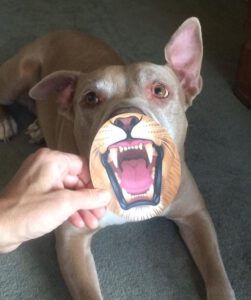Hands On or Hands Off?

When we say someone has “hands-on” experience, it means that he or she has personal interaction with or planning of a subject. Training a dog is a “hands-on” activity, meaning that there is detailed managing and decision-making in teaching the pup to understand what you are communicating. So is it really hands on or hands off?
Want to teach your dog to sit? Great! If you push on his rear until it goes to the floor and then give him a treat, this effectively teaches your pup that he gets a treat when you push his butt to the floor. You may have noticed that he pops his butt back up as soon as you let go. He likely does not understand what you want from him. Instead, if you wait for him to sit himself down and then offer a treat, it will start to make sense to him that sitting is what you like. And if he gets a cookie for it, he’ll likely do it again!
What about if you want a dog to move and he doesn’t want to? Have you ever noticed that if you physically pull on your dog’s collar, he pulls away from you? And then if you push his body, he pushes back on you? When you do this, you are triggering the oppositional reflex that tells your dog to do the opposite of the behavior you are looking for. So, trying to physically move a pup into a position is fruitless. It does not teach him anything valuable, only that you are going to move him. It can also teach him to avoid you, or to check out altogether in a manner of learned helplessness. If he feels like you are going to do all of the work, why should he bother? Force does not help your doggie understand what you want.
So, how do you move your dog away from you or come to you when you want? First, remember to keep your hands off. It is best to allow your dog to learn for himself how to move his own body. Next, he needs to feel like doing what you are asking is going to be a good thing for him. When we initially ask our pups to come and they don’t respond right away, we can get frustrated and it shows in our voices. Our dogs really don’t want to move or come to us if they feel that we are upset. To get your pooch to move, keep your voice light and happy-sounding. When he moves on his own, reinforce!! That’s the key! The reinforcement encourages your pup to repeat the behavior. Practice this repeatedly until your doggie is moving himself where you’d like him.
Teaching a dog to do different things with his body can be simple or complex, depending on the goal behavior. However, keeping your hands off during the training process means you can have clearer communication between you and your pup, resulting in a better chance for success.
Lynn Webb, M.A., KPA CTP, CTMT


